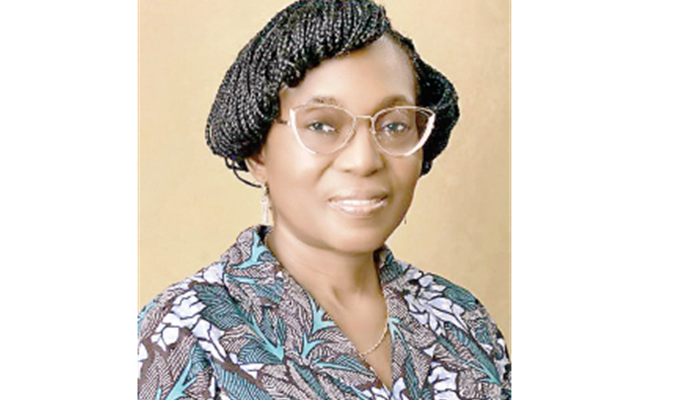

Professor Morenikeji Komolafe, a neurologist at the Obafemi Awolowo University Teaching Hospital Complex, Ile Ife, who spoke with SADE OGUNTOLA, says 90 percent of the causes of stroke in Nigeria are better prevented by simple things, including physical activity and a diet rich in green leafy vegetables.
STROKES are on the rise in Nigeria; why is this so in Nigeria?

A stroke is a medical emergency caused by lack of blood flow or rupture of a blood vessel in the brain. Stroke is on the increase in Nigeria and other African countries because of the marked rise in the risk factors for the condition, including hypertension, diabetes mellitus, and high levels of bad fat in the body.
High blood pressure is a major risk factor for both occlusion of the blood vessels (ischaemic stroke) and rupture of the blood vessels (hemorrhagic stroke). Hypertension is the major modifiable risk factor, with a population-attributable risk of 90% from the Stroke Investigation and Research Network (SIREN) study.
There are other lifestyle factors, for example, obesity and sedentary lifestyle, which is a person who sits down in the office and at home without exercising. There are dietary factors such as eating diets high in salt, fatty foods, and too much sugar, as well as red meat. Intake of green leafy vegetables has been found to be protective from developing stroke. The changes in our dietary pattern and adoption of westernised diets and fast foods are part of the factors driving the rising incidence of stroke.
Other social habits such as cigarette smoking, alcoholism, and drugs abuse are important risk factors in the younger segment of the population. An infection such as the Human Immunodeficiency Virus (HIV) is also a risk factor for young-onset stroke, and efforts are on going to reduce transmission and treatment of those affected.
Sickle cell disease can cause stroke in children and young adults, and individuals with Sickle cell disease should go for screening and treatment to prevent stroke. There is also an increasing incidence of chronic kidney diseases, which is also a risk factor for stroke. There are other factors, for example, increasing urbanisation, environmental pollution, and increasing levels of stress, which are all realities of life in present-day Nigeria.
Sleep disorders such as obstructive Sleep apnoea, which manifests with snoring, is also a risk factor. Lastly, there are the non-modifiable risk factors, which include increasing age, the black race, male gender family history of stroke, and genetic mutations.
What is the call of this year’s World Stroke Day theme?
The theme of this year’s World Stroke Day is “greater than stroke.” This emphasises community support for stroke survivors. It also encourages physical activity and active lifestyles to reduce stroke risk. This year’s campaign is leveraging the emotional power of sports to raise awareness about stroke and encourage definite action on stroke prevention and rehabilitation.
Everyone is encouraged to get active to be greater than stroke and also to harness the advantages of engaging in sporting activities to have an active lifestyle. “Greater than stroke” is an active challenge, calling on every single Nigerian, young and old, to commit to some kind of physical activity. All schools should promote regular routine physical activity among the students, and facilities should be provided to implement this. The activities could include walking, various types of games, and also regular inter-house and interschool sporting activities.
How do one’s genes and blood type affect one’s risk of an early stroke?
Persons who have blood disorders such as sickle cell disease and polycythaemia have a higher risk of stroke and could develop it as children or young adults. However, if they are detected early and have adequate treatment and regular screening, it is possible to prevent the development of stroke in them. There are genetic factors that could be suggested by a positive parental and family history. Research is ongoing about these genetic factors and abnormalities of the genes involved in lipid metabolism, thrombosis, and inflammation that contribute to genetic risk for stroke.
Anyone who has a family history of stroke, sudden death in any of the family, or stroke developing at a young age can see medical personnel who will screen and advise on preventive measures to be taken. Genetic studies can also be carried out after adequate counselling; however, these are not routine or widely available.
Are these tests that individuals can run to determine their likelihood of stroke in the future, maybe markers and so on?
The first and foremost is that all individuals should assess their risk of developing the common identified risk factors. This can be done using the stroke riskometer, which is a mobile app that is a simple and easy tool for assessing each individual’s risk of developing stroke in the next five to 10 years and what you can do to reduce it. The riskometer can also give indications of the risk for diabetes, heart attack, and dementia.
Each individual should know their health numbers, the weight, body mass index (BMI), blood pressure, and blood sugar. Other tests include fasting blood lipids (to check for fat) and an electrocardiogram to look for abnormalities in the heart rhythm, an important cause of clots in the heart and ischaemic stroke. Other tests can be ordered by the doctors after taking a detailed history and physical examination. Overall, each individual should do a detailed medical checkup and screening every year to assess their risk for developing stroke.
What is the ratio of strokes that is preventable?
The major risk factors for stroke are all preventable. It is for this reason that there should be implementation of population-based preventive measures addressing the risk factors through regular awareness education and a functional primary health care system where people can be easily screened and access medication. There should be education on early warning signs through the acronym FAST. The letters F stand for weakness or deviation of the face; A stands for drooping of the arm; S stands for speech difficulty; and T stands for time, meaning take the person to the hospital immediately. Everyone should recognise stroke and act FAST because time is brain.
Why is the prevention of a stroke better than its cure?
Prevention of stroke is much better and cheaper than cure. This is because of the grim statistics from the Global Burden of Diseases study: one in four people will develop a stroke in their lifetime. Stroke is the second leading cause of death and disability worldwide. Sub-Saharan Africa, which includes Nigeria, has the highest global incidence, prevalence, and mortality from stroke. Stroke in Nigeria affects the people in the productive years (age forties to fifties), and these are very devastating for the individual, the family, and the country. The estimated World Wide Cost of stroke care is over 451 billion US dollars, so stroke is also very expensive to manage. All persons, both young and old, should know about stroke, its risk factors, its warning signs, and the need to go to the hospital immediately if you think someone is having a stroke.
Why is prevention of stroke also important for preventing other neurological conditions like dementia and vascular diseases?
The number of persons living with dementia is increasing with the increasing age of the population. Some of the risk factors for stroke are also risk factors for dementia, in particular hypertension. Also, an individual that has experienced stroke more than one time is at risk of dementia, so prevention of stroke will help to prevent dementia.
What are the current social drivers of stroke in Nigeria?
The important social drivers of stroke include urbanisations, sedentary lifestyles, poor dietary habits and adoption of westernised diets, environmental pollution, and poor access to quality health care and medications to control hypertension.
Is it possible for symptoms to suggest a stroke but it is something else?
These are called stroke mimics, and important causes of such symptoms include sub-dural haematoma from a head trauma; women can have venous thrombosis, a clot in the brain after delivery; a brain tumour; a seizure; and metabolic problems like a persistently high blood sugar level (hyperglycemia). These are some of the mimics, and they would be detected when the doctor is given an adequate and detailed history and there is a thorough physical examination and appropriate tests.
Why is the stroke not limited to the old people?
Stroke is not limited to old people; there could be stroke in young people and children due to congenital and acquired heart conditions, connective tissue diseases like lupus, use of alcohol and cigarette smoking, as well as hard drugs like marijuana, cocaine, and heroin.
What should be done differently for people with stroke and for stroke prevention in Nigeria?
About 90 percent of the majority of the causes of stroke in Nigeria are due to modifiable risk factors and are preventable. Prevention of stroke should involve everyone, from individuals to communities, and the government should be involved. The approach should be intersectoral and interdisciplinary. The efforts can be directed at the individual, community level, and hospital.
For the community, there should be surveillance services, raising awareness on its primary and secondary prevention, and the provision of screening facilities and medication to treat hypertension, diabetes, and high fat in the blood.
In light of the 2024 World Stroke Day theme, there should be green and safe spaces in our urban areas where people can exercise. The government can strengthen the health care system, train, and improve facilities at all tiers of the health care system. There should be improvements in pre-hospital care and collaboration among all hospitals so that patients can access emergency care and be transferred from facilities with minimal health care facilities to those that can provide essential and advanced health care services, when required. The key message is that Time is Brain !!!
Read Also: FBN Holdings set to exceed recapitalisation requirement







